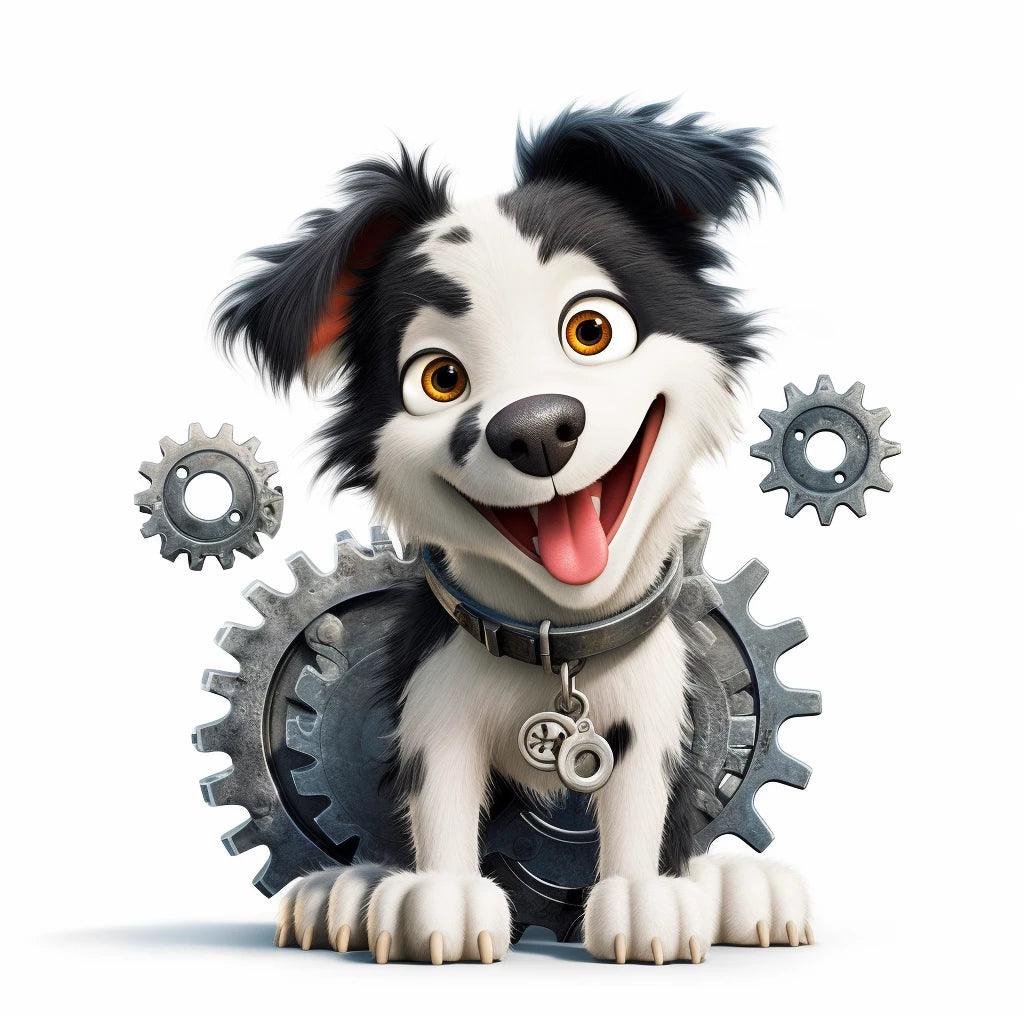
10 things to know about dogs
Share
Dogs are fascinating animals that have coexisted with humans for thousands of years. They are known to be loyal companions, devoted protectors, and indispensable work animals. But there's still a lot we don't know about dogs. In this article, we are going to review the 10 amazing things you didn't know about dogs.
Dogs can sense the passage of time
It has been shown that dogs are able to perceive the passage of time. Indeed, a study published in the journal Animal Cognition found that dogs were able to distinguish between short and long periods of time. The researchers used a series of signals to tell the dogs when a time limit had passed, and the dogs were able to distinguish these signals and respond appropriately.
Dogs can have dreams
Dogs have complex brains and can dream just like humans. Dogs' dreams are often related to their daily lives, such as chasing a ball or playing with their owner. Researchers have even recorded rapid eye movements (REM) in dogs while they sleep, suggesting they are dreaming.
Dogs can detect diseases
Dogs have a highly developed sense of smell, which allows them to detect odors that are imperceptible to humans. Indeed, it has been shown that dogs are capable of detecting certain diseases, such as cancer, using their sense of smell. Dogs can detect odorous compounds that are released by cancer cells, helping to diagnose the disease earlier and improve the chances of recovery.
Dogs have long-term memory
Dogs are known for their short-term memory, but they also have long-term memory. Researchers have found that dogs are able to remember people, places and events over long periods of time. Dogs can even be trained to find lost items or to retrace their path through a maze.
Dogs can be trained to detect drugs
Dogs are often used to detect drugs, thanks to their highly developed sense of smell. Dogs can be trained to detect a wide variety of drugs, such as cocaine, marijuana and heroin. Dogs can also be trained to detect explosives, firearms and dangerous chemicals.
Dogs can be trained to detect allergies
Dogs can also be trained to detect allergies in humans. Dogs are able to detect odors that are associated with allergens, such as dust mites, mold and pollen. Dogs can be trained to signal the presence of these allergens by sniffing the air or inspecting objects.
Dogs can have mental disorders
Just like humans, dogs can suffer from mental disorders, such as depression, anxiety and hyperactivity. The causes of these disorders may be linked to genetics, stress or trauma. Dogs who suffer from mental disorders may benefit from medication, behavioral therapy or lifestyle changes.
Dogs have limited color vision
Unlike humans, dogs have limited color vision. Dogs are able to distinguish colors, but they see primarily in shades of blue and yellow. This means that dogs have difficulty distinguishing colors such as red and green.
Dogs can be trained for specific tasks
Dogs are very versatile working animals, and can be trained for specific tasks, such as assisting people with disabilities, assisting law enforcement, and assisting in search and rescue. Dogs can also be trained to detect health problems, such as diabetes and seizures.
Dogs have a keen sense of smell
Dogs' sense of smell is 10,000 to 100,000 times more developed than that of humans. Dogs are able to detect odors that are imperceptible to humans, such as pheromones and odorous compounds. Dogs are also able to detect scents from afar, making them a valuable tool for search and rescue.
In conclusion, dogs are incredibly fascinating and versatile animals. Their ability to detect disease, work alongside law enforcement, and help people with disabilities make them indispensable work animals. Their acute sense of smell and long-term memory are also remarkable. We should all appreciate dogs for the wonderful companions and working animals that they are. Sources for this article include research conducted by recognized universities and scientific institutions, as well as professional and medical sources such as American Kennel Club, Animal Cognition, and Psychology Today.
Dogs can sense the passage of time
It has been shown that dogs are able to perceive the passage of time. Indeed, a study published in the journal Animal Cognition found that dogs were able to distinguish between short and long periods of time. The researchers used a series of signals to tell the dogs when a time limit had passed, and the dogs were able to distinguish these signals and respond appropriately.
Dogs can have dreams
Dogs have complex brains and can dream just like humans. Dogs' dreams are often related to their daily lives, such as chasing a ball or playing with their owner. Researchers have even recorded rapid eye movements (REM) in dogs while they sleep, suggesting they are dreaming.
Dogs can detect diseases
Dogs have a highly developed sense of smell, which allows them to detect odors that are imperceptible to humans. Indeed, it has been shown that dogs are capable of detecting certain diseases, such as cancer, using their sense of smell. Dogs can detect odorous compounds that are released by cancer cells, helping to diagnose the disease earlier and improve the chances of recovery.
Dogs have long-term memory
Dogs are known for their short-term memory, but they also have long-term memory. Researchers have found that dogs are able to remember people, places and events over long periods of time. Dogs can even be trained to find lost items or to retrace their path through a maze.
Dogs can be trained to detect drugs
Dogs are often used to detect drugs, thanks to their highly developed sense of smell. Dogs can be trained to detect a wide variety of drugs, such as cocaine, marijuana and heroin. Dogs can also be trained to detect explosives, firearms and dangerous chemicals.
Dogs can be trained to detect allergies
Dogs can also be trained to detect allergies in humans. Dogs are able to detect odors that are associated with allergens, such as dust mites, mold and pollen. Dogs can be trained to signal the presence of these allergens by sniffing the air or inspecting objects.
Dogs can have mental disorders
Just like humans, dogs can suffer from mental disorders, such as depression, anxiety and hyperactivity. The causes of these disorders may be linked to genetics, stress or trauma. Dogs who suffer from mental disorders may benefit from medication, behavioral therapy or lifestyle changes.
Dogs have limited color vision
Unlike humans, dogs have limited color vision. Dogs are able to distinguish colors, but they see primarily in shades of blue and yellow. This means that dogs have difficulty distinguishing colors such as red and green.
Dogs can be trained for specific tasks
Dogs are very versatile working animals, and can be trained for specific tasks, such as assisting people with disabilities, assisting law enforcement, and assisting in search and rescue. Dogs can also be trained to detect health problems, such as diabetes and seizures.
Dogs have a keen sense of smell
Dogs' sense of smell is 10,000 to 100,000 times more developed than that of humans. Dogs are able to detect odors that are imperceptible to humans, such as pheromones and odorous compounds. Dogs are also able to detect scents from afar, making them a valuable tool for search and rescue.
In conclusion, dogs are incredibly fascinating and versatile animals. Their ability to detect disease, work alongside law enforcement, and help people with disabilities make them indispensable work animals. Their acute sense of smell and long-term memory are also remarkable. We should all appreciate dogs for the wonderful companions and working animals that they are. Sources for this article include research conducted by recognized universities and scientific institutions, as well as professional and medical sources such as American Kennel Club, Animal Cognition, and Psychology Today.






